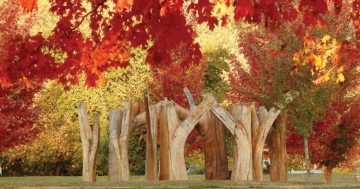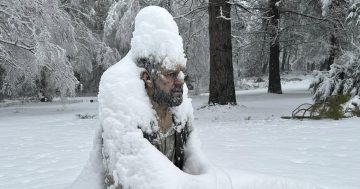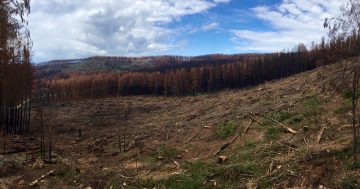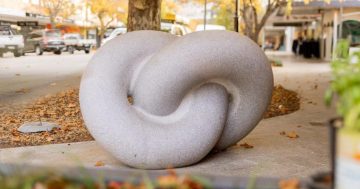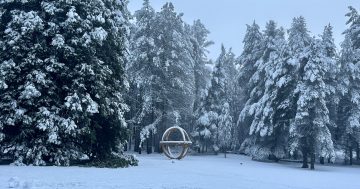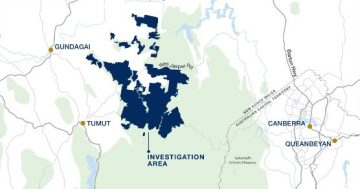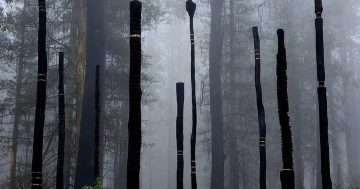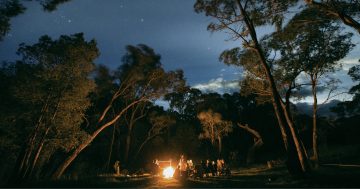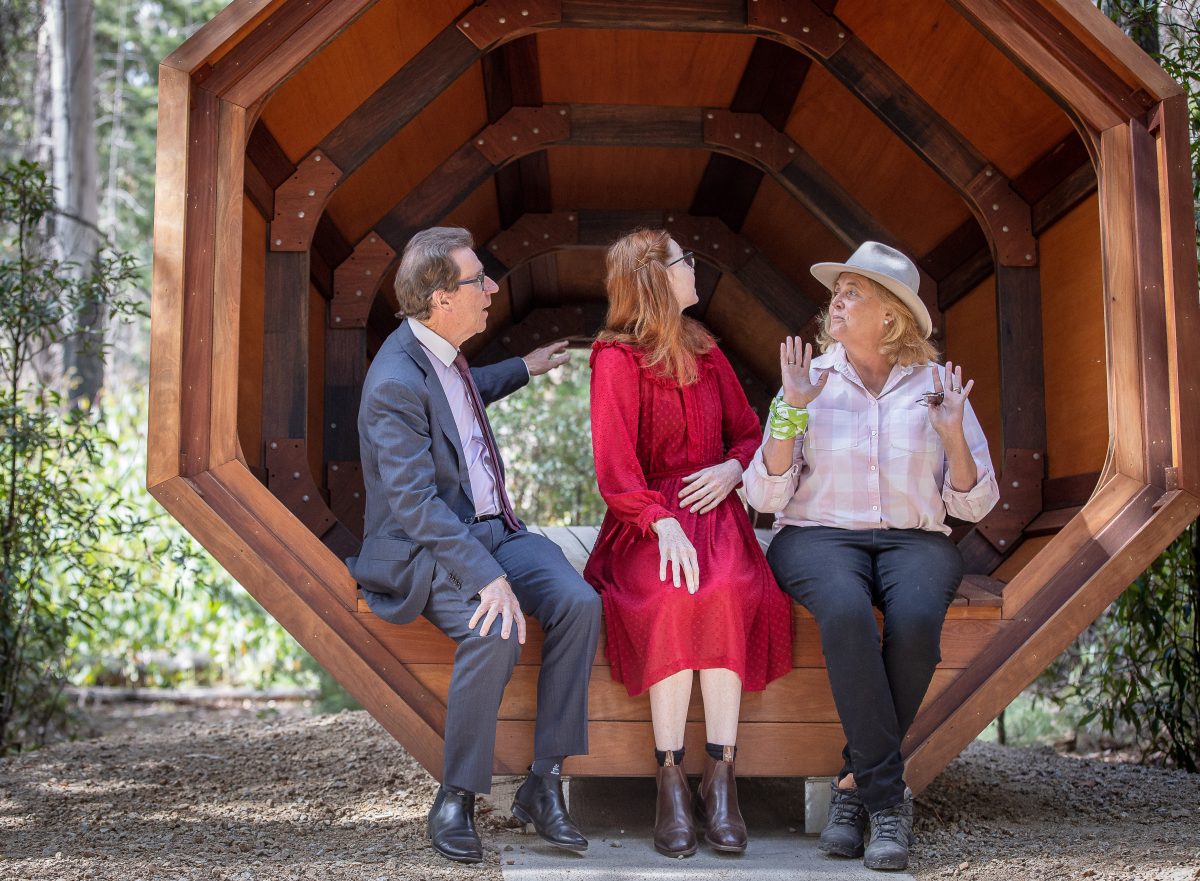
Member for Wagga Wagga Dr Joe McGirr, Destination Riverina Murray general manager Yvette Myhill and Snowy Valleys councillor Julia Ham were on hand to experience the sculptural beginnings of the Bago State Forest Nature-Based Tourism Enhancement Masterplan. Image: Forestry Corporation.
This week a phoenix rose from the ashes of a forest in the Snowy Valleys in the form of a masterplan for Bago State Forest.
The forest, scorched beyond recognition, loomed large among the crushing blows dealt the surrounding local communities of Tumut, Tumbarumba and Batlow during the Black Summer bushfires of 2019-2020.
Popular with a broad range of visitors, from day-trippers looking for nature-based activities such as bushwalks and picnics, through to dedicated campers seeking an immersive natural experience and overnight stays, Bago State Forest has also been loved and well used by recreational horse riders, with water readily available via Paddy’s River Dam and associated waterways.
On its fringes a copse of towering emerald Pinus lambertiana near the tiny hamlet of Laurel Hill, known as Sugar Pine Walk, has for decades led locals and visitors along a mystical – certainly picturesque – pathway which acted as a playground, a cathedral and a place of reflection in the century-old plantation.
But well on its way to reaching the dizzying heights of its predecessor, Sugar Pine Walk 2.0 was unveiled to around 70 invited guests on hand to show support for the Bago State Forest Nature-Based Tourism Enhancement Masterplan reveal at a ceremony at Pilot Hill Arboretum last Wednesday (1 March).
The new walk sits among five key sites including Pilot Hill Arboretum, Paling Yards, Paddy’s River Dam and Lochinvar rest area selected as jewels in the state forest that serve as the crowning glory of the western Snowy Mountains.
At the heart of the $1.9 million project is the goal of delivering local and regional tourism growth through improved forest-based visitor experiences incorporating art, health and wellness and environmental projects.
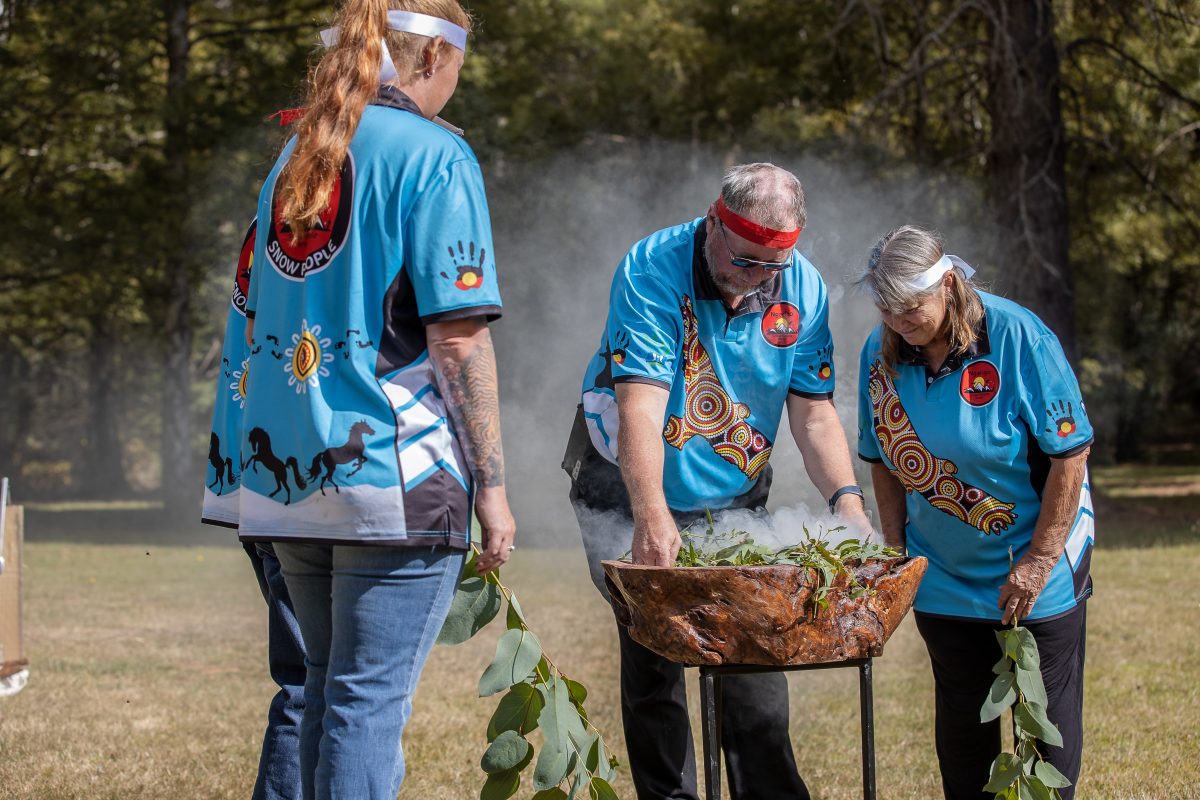
First Nations practices, culture and heritage are front and centre of the masterplan and formed a poignant part of Wednesday’s ceremony. Image: Forestry Corporation.
This translates into nature-based tourism enhancements including new visitor facilities, walking and horse riding trails, signage and interpretation, timber sculptural elements and environmental restoration.
Developed under the NSW Government Regional Growth and Environment Tourism Fund, the masterplan involves Forestry Corporation, The Mulloon Institute, NSW Health, Sculpture by the Sea, The Connective Co., Planet Ark and Tumut-Brungle Local Aboriginal Land Council.
Southern NSW Forestry Corporation partnerships leader Brendan Grimson said the masterplan was founded on the principles of “caring for community” and “caring for country”.
“Traditional owner culture and heritage, art and sculpture, visitor health and wellness, showcasing local hardwood and softwood timber, are all equally important elements of proposed works,” he said.
Large areas of the rare Montane Peatlands will also be restored.
Mulloon Institute landscape planner Bill McAllister said one important element of Montane Peatlands is that they store tonnes and tonnes of carbon dioxide.
“This makes their restoration a positive step to tackling climate change,” he said.
Murrumbidgee Local Health District (MLHD) bushfire/disaster recovery clinician Jenni Wines is excited to be a partner in the Bago project.
“We are now starting to view nature as an important preventative healthcare and self-care model, with enormous community reach. We are bringing clients to Pilot Hill Arboretum, using the facilities and walking trail as a therapeutic session,” said Ms Wines.
Sculpture by the Sea founding CEO and artistic director David Handley said the Bago State Forest project afforded the opportunity to extend their successful Snowy Valleys Sculpture Trail with a “sculpture forest,” positioned in the middle of the existing sculpture trail, giving the visitor three unique experiences all within a very short drive.
Dr Joe McGirr, state MP for Wagga Wagga, describes it as a particularly special project in the wake of the 2019/20 bushfires.
“I hope it will help in the ongoing recovery of community – not only financially through tourism, but also emotionally through a regenerated, accessible landscape,” he said.
Seeing First Nations practices, culture and heritage being placed front and centre of the masterplan, was a move Dr McGirr viewed as an important consideration of respect, leading to improved environmental, educational and cultural outcomes.
Member for Albury Justin Clancy said he was excited to see the masterplan launched, as the iconic sugar pines were a feature of tourism in the area.
“This collaboration with Sculpture by the Sea will literally see another iconic tourism project rise from the ashes,” he said. “This is how we come back from disaster. It has had an ongoing effect on the community as well as the forest, and this program and masterplan will support sensitive environments whilst backing local tourism and hospitality businesses as they work hard to attract visitors and promote economic development and growth.”
Original Article published by Edwina Mason on About Regional.








